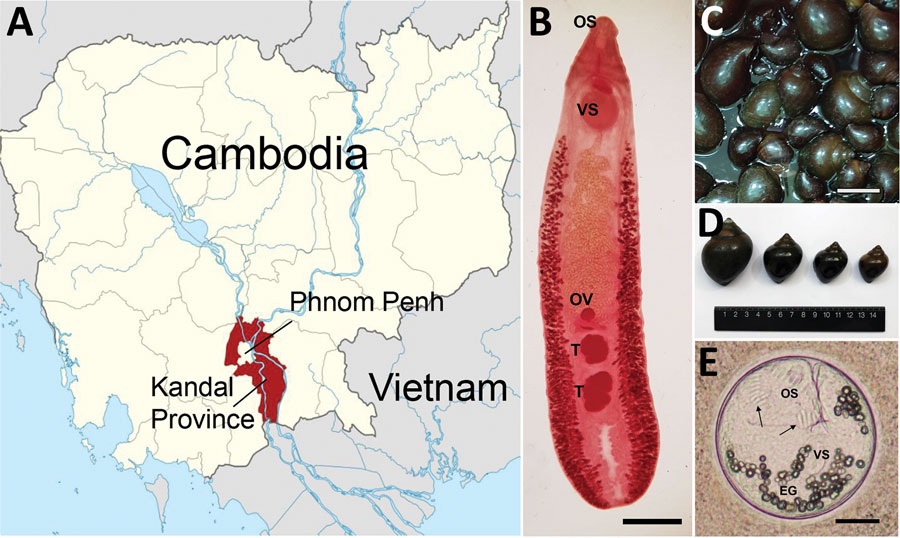Volume 30, Number 3—March 2024
Dispatch
High Prevalence of Echinostoma mekongi Infection in Schoolchildren and Adults, Kandal Province, Cambodia
Figure 1

Figure 1. Study area and specimens of Echinostoma mekongi flukes and Pila sp. snails for study of E. mekongi infection in schoolchildren and adults, Kandal Province, Cambodia. A) Study area in Cambodia. B) Adult specimen of E. mekongi fluke expelled from a volunteer after chemotherapy and purging. Scale bar = 1.2 mm. C, D) Pila sp. snails purchased from a local market in Kandal Province, showing variable sizes. The presence of metacercariae in these snails was confirmed. Scale bar in panel D = 3 cm. E) Metacercaria of E. mekongi encysted in the tissue of a Pila sp. snail, showing its characteristic structures, including 37 collar spines (arrows), oral sucker, ventral sucker, and excretory granules. Scale bar = 50 m. EG, excretory granules; OS, oral sucker; OV, ovary; T, testis; VS, ventral sucker.
1These authors contributed equally to this article.